Robert Shinew’s father lost his leg at 52 because of complications from diabetes.
So when Shinew, who also has diabetes, faced the same possibility at age 55, he fought for a different outcome.
Thankfully, months after spending 58 days in the hospital and a rehabilitation facility with a team of doctors working to save his leg, he’s now walking the woods on his 25 acres in Sand Lake, Michigan, with ease.
“It feels good to walk and see the trees and animals,” Shinew said.
The start of it all
It all started last winter when Shinew developed necrotizing fasciitis—a rare bacterial infection that spreads quickly and destroys the tissue it invades.
Doctors aren’t sure of its exact source, but it started right after he developed a blister on his toe from wearing his rubber boots without socks.
When he went to an appointment with his primary care doctor, the doctor noticed swelling in his leg and urged him to go to the emergency room to get it checked out.
Little did he know, he wouldn’t go back home for two months.
Doctors with the Spectrum Health Wound Healing Program and the Limb Care and Preservation Clinic at Spectrum Health Butterworth Hospital immediately started Shinew on antibiotics and hyperbaric oxygen treatment.
For this, Shinew entered the hyperbaric oxygen chamber, lying on a bed in a clear chamber about 3 feet wide. Drue Orwig, DO, a wound care specialist with Spectrum Health, said oxygen is pumped into the tube, creating a high-pressure environment that increases the amount of oxygen that’s absorbed into the body.
“It creates a high-oxygen environment that infections do not like,” she said. “This helps to fight bacterial infections by enhancing your own body’s immune system and helping the antibiotics to work more effectively.”
Shinew would end up having 21 hyperbaric oxygen treatments over 15 days.
Team effort
As Dr. Orwig did her work, she was joined by Brianna David, DPM, a podiatrist who removed dead and infected tissue to help healthy tissue around it survive.
They also used what’s called a wound vacuum over the front and side of Shinew’s leg to promote healing.
Shinew’s diabetes made his case even more urgent and potentially trickier to treat.
“When we see these severe infections, our goal is always salvage (of the limb),” Dr. David said. “We want them to be able to function and walk and do the things they want to do.”
When things turn out like they did for Shinew, it’s gratifying for doctors.
“To see where he was, to now, where he is completely healed, I think (it’s) pretty cool,” Dr. David said.
Dr. Orwig credited the close coordination of the Limb Care and Preservation Clinic with Shinew’s positive outcome. Plastic surgeons were also involved to do grafts and flaps on his leg, using skin from his wrist.
“Getting everyone involved very quickly is what helped save his leg,” she said.
Getting back to a new normal
Shinew looks back on it all with relief.
“Every machine that has a hole big enough for me to fit in, I went into it,” he said.
Doctors had told him there was a 40 percent chance they would be able to save his leg.
“Whenever I woke up and saw my foot, it was good,” he said.
Now, he’s walking without assistance and enjoying life. He has also returned to work.
“I wouldn’t call it normal, but it’s about as close as I think I can get,” Shinew said.
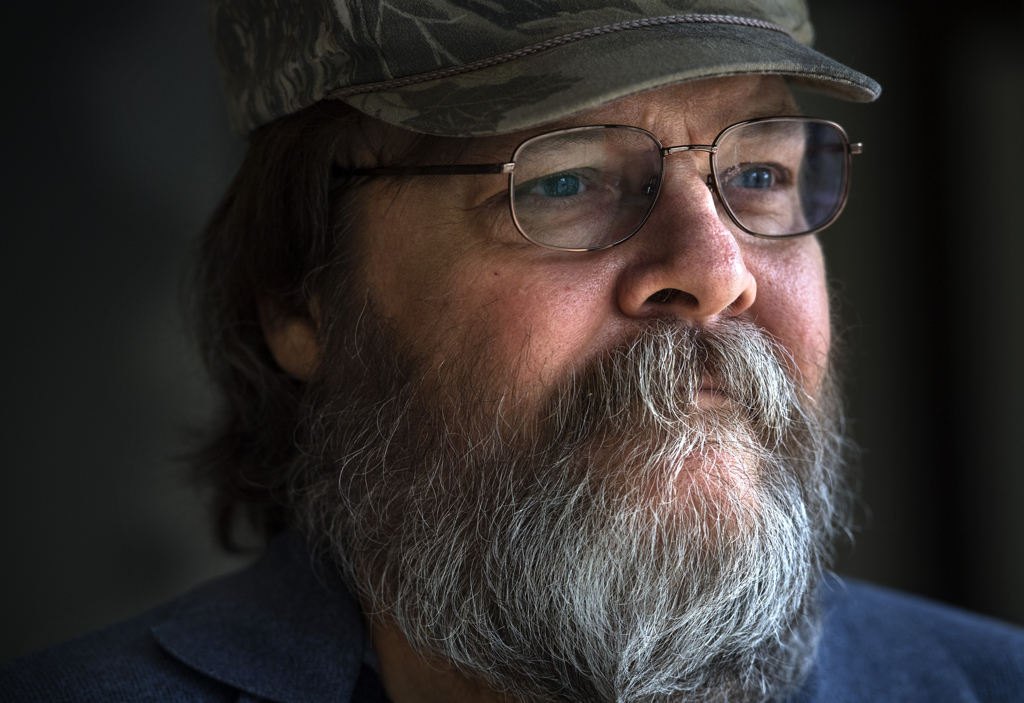


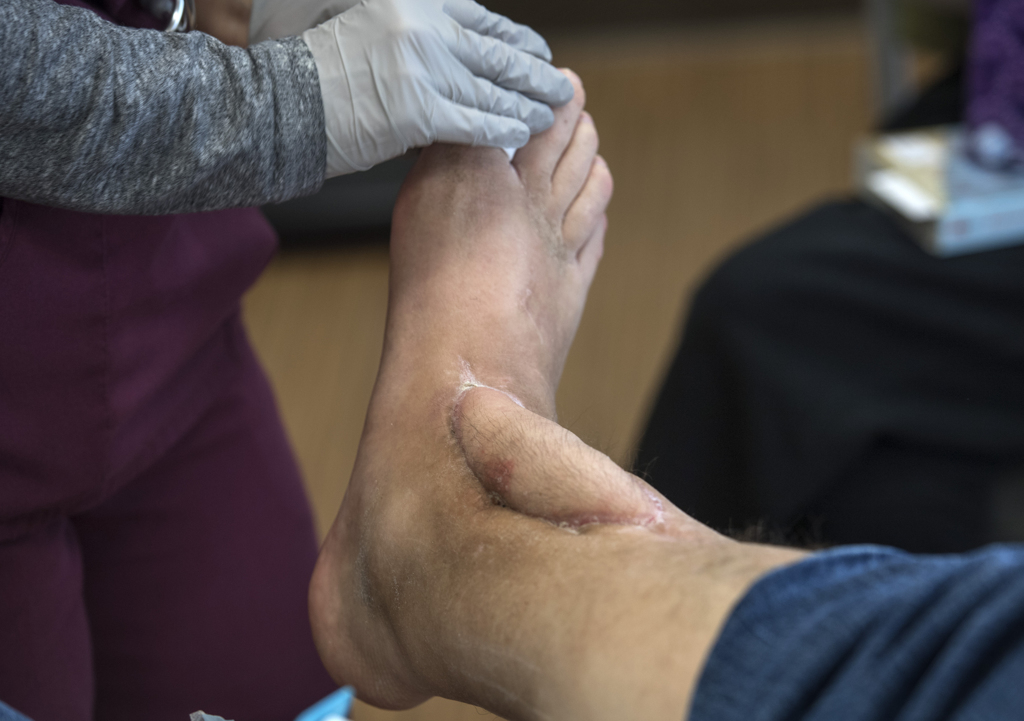

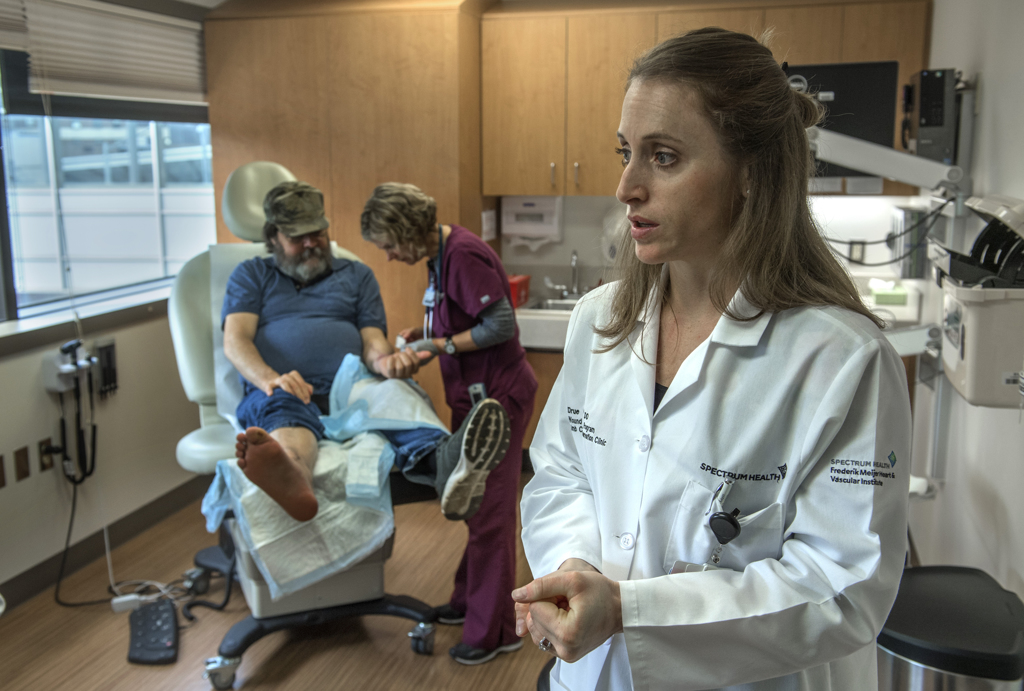



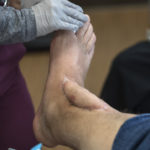
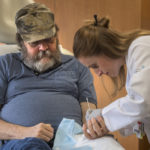

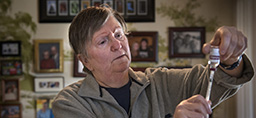 /a>
/a>
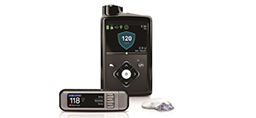 /a>
/a>
 /a>
/a>